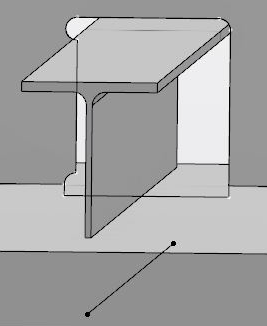About Slots and Collars | ||||||
|
| |||||
Slots resolve the interference between a penetrated and a penetrating
element. The interference is computed upon the intersection of the canonical
molded surface (CMS) of the penetrated element (panel or plate) or the
delimited trace (DT) of the penetrated element (profile) with the delimited
trace (DT) of the penetrating element. If these elements are intersecting, a
slot is created.

Parameters
- Linked to Reference
-
Keep this check box selected to link instantiated slot with its slot reference. Any changes done to the slot reference will reflect in the instantiated slots once they are synchronized.
Note: By default, the Linked to reference check box is selected when the slot is defined as linkable in the slot table. If the slot is not defined as linkable, this check box is cleared and becomes unavailable. When this check box is selected and you create a slot, the app checks for the previous instantiation of the same slot reference. If it does not exist, the slot is instantiated and the parameters are linked. The public parameters are displayed in the Parameters area, but they are unavailable for edition.
- Slot Parameter
- Lists the public parameters of slot. It contains the list of parameter name and parameter value.
- Collar Parameters
-
Lists the public parameters of collar. It contains the list of parameters name and parameter value.
- Collar Material and Orientation
-
- Preferred values only
- Shows only recommended combination of material-grade and
thickness.
Note: If the material table is not set in the Data Setup, this option is unavailable.
- Same as Penetrated
- Retrieves the material-grade and thickness of collar same
as of the penetrated element.
If you select this check box, the Preferred values only check box and the material and thickness lists become unavailable.
If the material or thickness of the penetrated element is modified after the slot creation, you need to manually update the material and thickness of the collar.